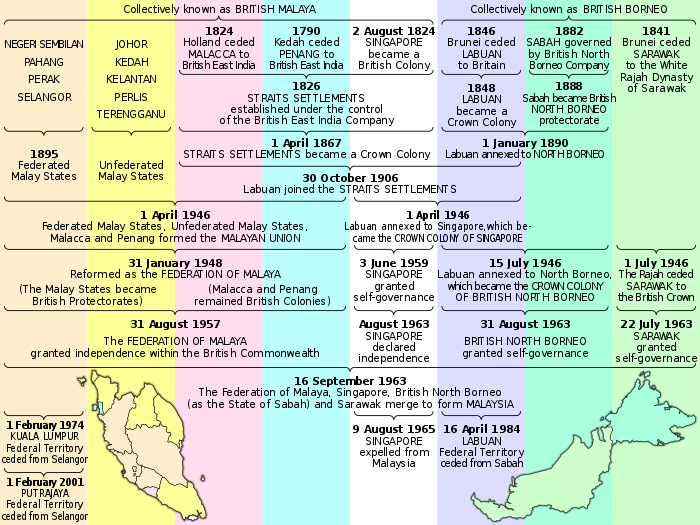Unfederated Malay States
This article needs additional citations for verification. (August 2023) |
Unfederated Malay States Negeri-Negeri Melayu Tidak Bersekutu (Malay) | |||||||||||||||||||||||||
|---|---|---|---|---|---|---|---|---|---|---|---|---|---|---|---|---|---|---|---|---|---|---|---|---|---|
| 1909–1942 1942–1945 (Japanese occupation) 1945–1946 | |||||||||||||||||||||||||
 Malaya in 1922:
Unfederated Malay States
Federated Malay States
Straits Settlements | |||||||||||||||||||||||||
| Status | English | ||||||||||||||||||||||||
| Religion | Sunni Islam | ||||||||||||||||||||||||
| Membership | |||||||||||||||||||||||||
| Government | Constitutional monarchy | ||||||||||||||||||||||||
| Monarch | |||||||||||||||||||||||||
• 1909–1910 (first) | Edward VII | ||||||||||||||||||||||||
• 1936–1942; 1945–1946 (last) | George VI | ||||||||||||||||||||||||
| Historical era | British Empire | ||||||||||||||||||||||||
| 9 July 1909 | |||||||||||||||||||||||||
| 15 February 1942 – 2 September 1945 | |||||||||||||||||||||||||
| 2 September 1945 | |||||||||||||||||||||||||
| 1 April 1946 | |||||||||||||||||||||||||
| Currency | Straits dollar (1909–1939) Malayan dollar (1939–1942; 1945–1946) | ||||||||||||||||||||||||
| |||||||||||||||||||||||||
| Today part of | Malaysia | ||||||||||||||||||||||||
| History of Malaysia |
|---|
 |
|
|
The term "Unfederated Malay States" (Malay: Negeri-Negeri Melayu Tidak Bersekutu; Jawi: نݢري٢ ملايو تيدق برسکوتو) was the collective name given to five British protected states in the Malay Peninsula during the first half of the 20th century. These states were Johor, Kedah, Kelantan, Perlis, and Terengganu. In contrast with the four adjoining Federated Malay States of Selangor, Perak, Pahang, and Negeri Sembilan, the five Unfederated Malay States lacked common institutions, and did not form a single state in international law; they were in fact standalone British protectorates.
In 1946, the British colony of the
History
Johor accepted a treaty of protection with the United Kingdom in 1885, and eventually succumbed to British pressure to accept a resident "Advisor" in 1914. Unlike the other Malay states under British protection, however, Johor remained outside of the Federated Malay States (formed in 1895).
Under the
Administration and language
The chief officer of the British

References
- ISBN 0-7607-3203-5.
